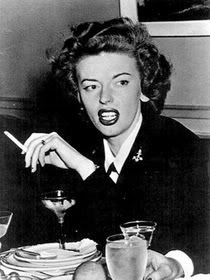
Professor Hex
Scholar of the Strange and Mysterious

Archives
04/01/2004 - 05/01/2004
05/01/2004 - 06/01/2004
06/01/2004 - 07/01/2004
07/01/2004 - 08/01/2004
08/01/2004 - 09/01/2004
09/01/2004 - 10/01/2004
10/01/2004 - 11/01/2004
11/01/2004 - 12/01/2004
12/01/2004 - 01/01/2005
01/01/2005 - 02/01/2005
02/01/2005 - 03/01/2005
03/01/2005 - 04/01/2005
04/01/2005 - 05/01/2005
05/01/2005 - 06/01/2005
06/01/2005 - 07/01/2005
07/01/2005 - 08/01/2005
08/01/2005 - 09/01/2005
09/01/2005 - 10/01/2005
10/01/2005 - 11/01/2005
11/01/2005 - 12/01/2005
12/01/2005 - 01/01/2006
01/01/2006 - 02/01/2006
02/01/2006 - 03/01/2006
03/01/2006 - 04/01/2006
04/01/2006 - 05/01/2006
05/01/2006 - 06/01/2006
06/01/2006 - 07/01/2006
07/01/2006 - 08/01/2006
08/01/2006 - 09/01/2006
09/01/2006 - 10/01/2006
10/01/2006 - 11/01/2006
11/01/2006 - 12/01/2006
12/01/2006 - 01/01/2007
01/01/2007 - 02/01/2007
02/01/2007 - 03/01/2007
03/01/2007 - 04/01/2007
04/01/2007 - 05/01/2007
05/01/2007 - 06/01/2007
06/01/2007 - 07/01/2007
07/01/2007 - 08/01/2007
08/01/2007 - 09/01/2007
09/01/2007 - 10/01/2007
10/01/2007 - 11/01/2007
11/01/2007 - 12/01/2007
12/01/2007 - 01/01/2008
01/01/2008 - 02/01/2008
02/01/2008 - 03/01/2008
03/01/2008 - 04/01/2008
04/01/2008 - 05/01/2008
05/01/2008 - 06/01/2008
06/01/2008 - 07/01/2008
07/01/2008 - 08/01/2008
08/01/2008 - 09/01/2008
09/01/2008 - 10/01/2008
10/01/2008 - 11/01/2008
11/01/2008 - 12/01/2008
12/01/2008 - 01/01/2009
01/01/2009 - 02/01/2009
02/01/2009 - 03/01/2009
03/01/2009 - 04/01/2009
04/01/2009 - 05/01/2009
05/01/2009 - 06/01/2009
06/01/2009 - 07/01/2009
07/01/2009 - 08/01/2009
08/01/2009 - 09/01/2009
09/01/2009 - 10/01/2009
10/01/2009 - 11/01/2009
11/01/2009 - 12/01/2009
12/01/2009 - 01/01/2010
01/01/2010 - 02/01/2010
02/01/2010 - 03/01/2010
03/01/2010 - 04/01/2010
04/01/2010 - 05/01/2010
05/01/2010 - 06/01/2010
06/01/2010 - 07/01/2010
07/01/2010 - 08/01/2010
08/01/2010 - 09/01/2010
09/01/2010 - 10/01/2010
10/01/2010 - 11/01/2010
11/01/2010 - 12/01/2010
12/01/2010 - 01/01/2011
01/01/2011 - 02/01/2011
02/01/2011 - 03/01/2011
03/01/2011 - 04/01/2011
04/01/2011 - 05/01/2011
05/01/2011 - 06/01/2011
06/01/2011 - 07/01/2011
07/01/2011 - 08/01/2011
08/01/2011 - 09/01/2011
09/01/2011 - 10/01/2011
10/01/2011 - 11/01/2011
11/01/2011 - 12/01/2011
12/01/2011 - 01/01/2012
01/01/2012 - 02/01/2012
07/01/2012 - 08/01/2012
08/01/2012 - 09/01/2012
09/01/2012 - 10/01/2012
10/01/2012 - 11/01/2012
11/01/2012 - 12/01/2012
12/01/2012 - 01/01/2013
01/01/2013 - 02/01/2013
02/01/2013 - 03/01/2013
03/01/2013 - 04/01/2013
04/01/2013 - 05/01/2013
05/01/2013 - 06/01/2013
06/01/2013 - 07/01/2013
07/01/2013 - 08/01/2013
08/01/2013 - 09/01/2013
09/01/2013 - 10/01/2013
10/01/2013 - 11/01/2013
11/01/2013 - 12/01/2013
12/01/2013 - 01/01/2014
01/01/2014 - 02/01/2014
02/01/2014 - 03/01/2014
12/01/2014 - 01/01/2015
08/01/2015 - 09/01/2015

|
Subscribe to
Comments [Atom]

Home
Prof. Hex on Facebook
Haunted Hex
Mail the Professor
1947project
About Paranormal
Acumedico
Adventure House
AlterNet
Alternative Science
Americablog
American Monsters
Andrew Gough's Arcadia
The Anomalist
Archaeology Magazine
Beast of Gevaudan
Beyond the Limits of Reason
BFRO
Bigfoot Sightings
Biofort
Bizarre Labs
Blogsquatcher
Boingboing
Borderland Science
Brad Blog
Cabinet of Wonders
Catch of the Day
Cellar Walls
Center for and Informed America
Centre for Fortean Zoology
Charles Fort Institute
Confessions of an Occult Mastermind
Cosmic Hex
Covert History
Crimeblog
Crime Library
Cryptomundo
Cryptozoologist
Cryptozoology.com
Cryptozoo-oscity
Cult News
Curious Expeditions
Daily Galaxy
Daily Grail
Daily Mirror
Darkride & Funhouse Enthusiasts
Damn Interesting
Disinformation
Doctor Fong's House of Mysteries
Dzi Beads
Ephemera
Erowid
Esoteric Archives
Esoteric Book Review
FARK
Feral House
Footprints at the River's Edge
Forgetomori
Forgotten New York
Formosa Neijia
Fortean Bureau
Fortean Times
Fortean Zoology
From The Shadows
Ghost Theory
Golden Bough
Google News
Gralien Report
Greenwoods Village
Hades Publications
Heart of Albion Press
Heavy Stuff
High Weirdness Project
Historic Sites and Shipwrecks
Hollywood Lost and Found
Howard Hallis
Huff Crime Blog
Illuminati Conspiracy Archive
Indrid Cold
Inexplicata
io9
ISGP
John August
John Cooley
Johnsville News
Karl Shuker
Kiki's Cauldron
Legends and Lore of Illinois
Llewellyn Journal
Lucky Mojo
Mac Tonnies
Mack White
Mad Cow News
Maajak World
Make: Blog
Marvel: A Biography of Jack Parsons
Megalithic Portal
MetaFilter
Michael Prescott
Militant Platypus
Miss Matters
MSN
Mmothra
Modern Mechanix
Monsterblog
Monster USA
Museum of Hoaxes
Mutate
NEARA
Neatorama
New Criminologist
New England Anomaly
New Scientist
New York City Walk
New York History Blog
Nick Redfern
No Smoking in the Skull Cave
Obakemono Project
Occult of Personality
Occult Science TV
OhGizmo
Okie Treasure Hunter
Oregon L.O.W.F.I
Oswald's Mother
Our Strange World
Our Valued Customers
Overheard in New York
Paleo-Future
Parafactor
Paranomalist
Paranormal Pastor
Parascientifica
Phantoms and Monsters
Pop Occulture
Poppet Projects
Posthuman Blues
Professor Pan
Pulp Rack
Qi Journal
Raw Story
Retro-Gram
Retro Thing
Ricky Jay
Rigorous Intuition
Sacred Text Archives
Sartorialist
Satellite Discoveries
Secret Sun
Sexy Witch
Shadowraiths
Smiley Face Killers
Sniggle.net
Spelunking thee Ideosphere
Sploid
Strange Ark
Strange Maine
Strange Maps
Strange Nation
Strange New Products
Strange State
Supernatural News
Swapatorium
Synchromysticism Forum
Tailrank
Tales to Astonish
Technoccult
Tesla Society
ThothWeb
Thrilling Wonder
Tobin's Spirit Guide
Tony's Kansas City
Trailers From Hell
TreasureNet
Truth Seekers
Underwater Times
Unexplained-Mysteries
Unsung Joe
Vanishing New York
Viewzone Magazine
Vintage Kansas City
Warren Ellis
Weird Asia News
Weird Wisconsin
WeirdWriter
Weird Universe
Wetass Chronicles
Wiki Cryptid List
Wisebread
Wit of the Staircase
Witchvox
Writer's Links
Yahoo
Yuka Tamura
Zodiac Killer
Privacy Policy
